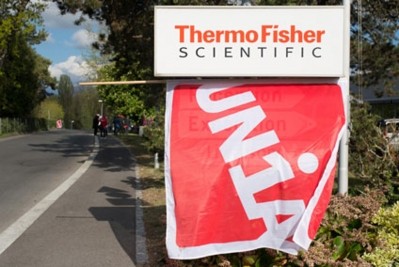Thermo Fisher Scientific targets elemental and isotope analysis

The elemental analyser (EA) IsoLink isotope ratio mass spectrometry (IRMS) system has applications in food authenticity and origin and food web studies in ecology and biology.
EA-IRMS analysis uses temperature-ramped gas chromatography (GC) for high sample throughput and analytical reproducibility for µg- to mg-level elemental and isotope analysis.
Applications related to origin and adulteration
Jens Griep-Raming, senior manager strategy and business development, Inorganic Mass Spectrometry at Thermo Fisher Scientific, said an example application is use in the detection of economically motivated adulterated honey.
“In this particular application the Thermo Scientific EA IsoLink IRMS System can be used to determine the addition of cheaper sugars, such as high fructose corn syrup (HFCS), to the more expensive honeys. The method of detection is a standard AOAC method, which benefits from the robustness and reproducibility of the EA IsoLink IRMS System,” he told FoodQualityNews.
“Another example of a food fraud application is the analysis of olive oils to determine origin. Using this technique, the origin of the olives used to make the oil can be determined, for example, is it truly Greek olive oil or were olives from Tunisia or Italy used?”
The EA IsoLink EA/IRMS was developed for labs doing elemental analysis to experience higher throughputs at a lower cost-per-sample, without compromising sensitivity or robustness.
It is continuous flow which allows for higher automation, faster analysis times and simultaneous determination of up to three elements/isotope ratios from one sample.
Method to determine isotope ratios
Griep-Raming said in general EA coupled to IRMS is an easy-to-use and rugged method for determination of isotope ratios.
“The EA IsoLink IMRS System features improved gas separation and peak shapes for the combustion gases, using temperature-ramped GC, which uses a temperature ramp during the elution period of a compound to provide optimal chromatographic conditions,” he said.
“This directly translates to improved peak shapes and increased peak heights, i.e. improved signal-to-noise ratios, and thus improved precision. The improved peak shapes and increased peak heights means that less sample material is required and better precision can be obtained for a given sample size.
“For example, the improved chromatographic approach for EA-IRMS is especially beneficial for sulfur analysis, offering more than a 3-fold increase in peak height. Moreover, continuous flow gas chromatography ensures that you can evaluate the quality of the analysis by ensuring the fidelity of the combustion and pyrolysis processes.”
Analysis of isotopes of Carbon, Nitrogen and Sulfur (CNS analysis) from one sample drop can take 10 minutes, from which sample sizes as small as single digit micrograms of the element can be analyzed. Precision of measurements can be 10 micrograms of the analyte or less.
The Thermo Scientific Helium Management Module is a standard feature on the EA IsoLink IRMS System and reduces helium consumption by more than 60%.
It optimizes flow inside the system to the minimum needed for analysis and other operating modes. This is especially important as global helium shortages increase.
The firm said the possibility of working with less sample size leads to consumption of fewer chemicals, prolonged maintenance intervals and lower cost per sample.
IRMS performance characteristics
Instruments used in IRMS need to be designed to offer the best linearity and stability technically possible, said Griep-Raming.
“Repeatability/reproducibility is enabled by a robust instrument design, rugged sample handling and inlet devices. Selectivity in IRMS is typically achieved by specialized sample inlet devices, such as the EA IsoLink IRMS System for bulk elemental analysis, or the Thermo Scientific GC IsoLink II for compound specific GC analysis,” he said.
“With the EA IsoLink IRMS System, the accessible linear range can be extended to lower sample sizes. Flexibility is also an important feature for many users. The EA IsoLink IRMS System adds to this by enabling sampling from low microgram to multiple milligram amounts and is capable of providing the isotopic analysis for Carbon, Nitrogen, Sulfur, Oxygen and Hydrogen within one system.
“More specifically, the EA IsoLink IRMS System can cope with the most demanding of sample types, with CNS triple analysis possible on high C/S ratio sample types, such as wood, with outstanding precision.”





















